Oxytocin Facilitates Allomaternal Behavior under Stress in Laboratory Mice
- PMID: 35017259
- PMCID: PMC8868028
- DOI: 10.1523/ENEURO.0405-21.2022
Oxytocin Facilitates Allomaternal Behavior under Stress in Laboratory Mice
Abstract
Oxytocin (Oxt) controls reproductive physiology and various kinds of social behaviors, but the exact contribution of Oxt to different components of parental care still needs to be determined. Here, we illustrate the neuroanatomical relations of the parental nurturing-induced neuronal activation with magnocellular Oxt neurons and fibers in the medial preoptic area (MPOA), the brain region critical for parental and alloparental behaviors. We used genetically-targeted mouse lines for Oxt, Oxt receptor (Oxtr), vasopressin receptor 1a (Avpr1a), vasopressin receptor 1b (Avpr1b), and thyrotropin-releasing hormone (Trh) to systematically examine the role of Oxt-related signaling in pup-directed behaviors. The Oxtr-Avpr1a-Avpr1b triple knock-out (TKO), and Oxt-Trh-Avpr1a-Avpr1b quadruple KO (QKO) mice were grossly healthy and fertile, except for their complete deficiency in milk ejection and modest deficiency in parturition secondary to maternal loss of the Oxt or Oxtr gene. In our minimal stress conditions, pup-directed behaviors in TKO and QKO mothers and fathers, virgin females and males were essentially indistinguishable from those of their littermates with other genotypes. However, Oxtr KO virgin females did show decreased pup retrieval in the pup-exposure assay performed right after restraint stress. This stress vulnerability in the Oxtr KO was abolished by the additional Avpr1b KO. The general stress sensitivity, as measured by plasma cortisol elevation after restraint stress or by the behavioral performance in the open field (OF) and elevated plus maze (EPM), were not altered in the Oxtr KO but were reduced in the Avpr1b KO females, indicating that the balance of neurohypophysial hormones affects the outcome of pup-directed behaviors.
Keywords: Mus musculus; maternal behavior; medial preoptic area; oxytocin; vasopressin.
Copyright © 2022 Tsuneoka et al.
Figures
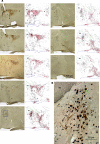
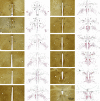
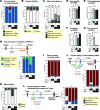
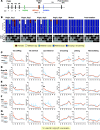
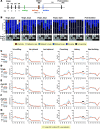





Similar articles
-
Pervasive social deficits, but normal parturition, in oxytocin receptor-deficient mice.Proc Natl Acad Sci U S A. 2005 Nov 1;102(44):16096-101. doi: 10.1073/pnas.0505312102. Epub 2005 Oct 25. Proc Natl Acad Sci U S A. 2005. PMID: 16249339 Free PMC article.
-
Effects of oxytocin ablation on pup rescue, nursing behaviors and response to pup separation in early-to-mid postpartum mice.J Neuroendocrinol. 2023 Jul;35(7):e13247. doi: 10.1111/jne.13247. Epub 2023 Mar 27. J Neuroendocrinol. 2023. PMID: 36973234
-
Oxytocin receptor gene loss influences expression of the oxytocin gene in C57BL/6J mice in a sex- and age-dependent manner.J Neuroendocrinol. 2020 Feb;32(2):e12821. doi: 10.1111/jne.12821. Epub 2020 Feb 11. J Neuroendocrinol. 2020. PMID: 31845417 Free PMC article.
-
The contributions of oxytocin and vasopressin pathway genes to human behavior.Horm Behav. 2012 Mar;61(3):359-79. doi: 10.1016/j.yhbeh.2011.12.014. Epub 2011 Dec 29. Horm Behav. 2012. PMID: 22245314 Review.
-
Molecular genetic studies of the arginine vasopressin 1a receptor (AVPR1a) and the oxytocin receptor (OXTR) in human behaviour: from autism to altruism with some notes in between.Prog Brain Res. 2008;170:435-49. doi: 10.1016/S0079-6123(08)00434-2. Prog Brain Res. 2008. PMID: 18655900 Review.
Cited by
-
Medial preoptic circuits governing instinctive social behaviors.iScience. 2024 Jun 19;27(7):110296. doi: 10.1016/j.isci.2024.110296. eCollection 2024 Jul 19. iScience. 2024. PMID: 39055958 Free PMC article. Review.
-
Multisensory integration of social signals by a pathway from the basal amygdala to the auditory cortex in maternal mice.Curr Biol. 2025 Jan 6;35(1):36-49.e4. doi: 10.1016/j.cub.2024.10.078. Epub 2024 Dec 3. Curr Biol. 2025. PMID: 39631401
-
Exploring Candidate Gene Studies and Alexithymia: A Systematic Review.Genes (Basel). 2024 Aug 4;15(8):1025. doi: 10.3390/genes15081025. Genes (Basel). 2024. PMID: 39202385 Free PMC article.
-
Lateralized local circuit tuning in female mouse auditory cortex.Neurosci Res. 2025 Jul;216:104897. doi: 10.1016/j.neures.2025.03.009. Epub 2025 Apr 4. Neurosci Res. 2025. PMID: 40189152 Free PMC article.
-
Oxytocin receptors in the Magel2 mouse model of autism: Specific region, age, sex and oxytocin treatment effects.Front Neurosci. 2023 Mar 14;17:1026939. doi: 10.3389/fnins.2023.1026939. eCollection 2023. Front Neurosci. 2023. PMID: 36998737 Free PMC article.
References
-
- Bayer SA, Altman J (2004) Development of the telencephalon: neural stem cells, neurogenesis, and neuronal migration. In: The rat nervous system, Ed 3 (Paxinos G, ed), pp 27–73. San Diego: Elsevier.
Publication types
MeSH terms
Substances
LinkOut - more resources
Full Text Sources
Molecular Biology Databases
Research Materials
